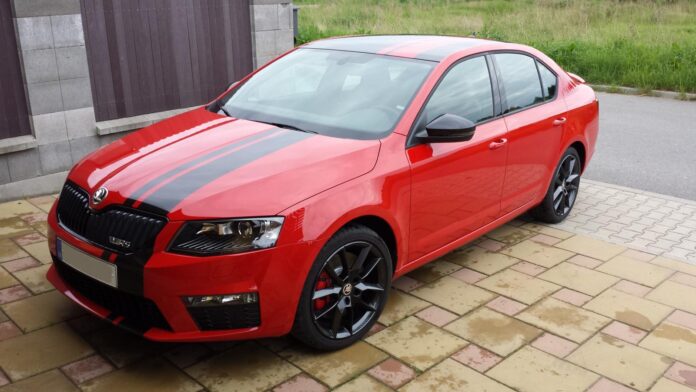Cars are not just mere means of transportation; they are investments, assets, and, for some, a sense of pride. Skoda, a brand originating from the Czech Republic, is known for its reliable and well-designed vehicles. As with any piece of machinery, maintaining your Skoda is essential to ensure it operates at peak performance and to prevent unnecessary wear and tear. This blog post is designed as a checklist for Skoda car owners, providing valuable insights into regular maintenance tasks that will keep your Skoda at its best.
Regular Oil Changes and Fluid Checks
Oil is the lifeblood of your Skoda, and ensuring its quality and performance is essential. Regular oil changes, along with utilizing high-quality Skoda tuning parts, can optimize your vehicle’s performance and prolong its lifespan. Over time, the oil can degrade and lose its effectiveness, which is why regular oil changes are crucial. Most experts recommend changing the oil every 5,000 to 7,500 miles but refer to your Skoda’s manual for specific guidelines.
Additionally, the car’s other fluids – coolant, brake fluid, power steering fluid, and transmission fluid – play vital roles in your vehicle’s performance and should be checked regularly. Low or dirty fluids can affect your Skoda’s efficiency, and in some cases, cause significant damage. Make it a habit to check these fluid levels at least once a month or before embarking on a long journey.
Tire Maintenance
Your Skoda’s tires connect your vehicle to the road and greatly influence your car’s handling and safety. Regular tire maintenance involves checking the tire pressure, inspecting for any physical damage like cuts or punctures, and verifying the tread depth. Driving on under-inflated, over-inflated, or worn-out tires can adversely affect fuel efficiency, handling, and safety.
Tire rotation is another essential part of tire maintenance. Regularly rotating your tires can ensure even wear, prolonging their lifespan and improving overall vehicle performance. Typically, tire rotation should be done every 5,000 to 8,000 miles, but again, refer to your Skoda’s manual for specific recommendations.
Brake System Inspection
Brakes are one of the most critical safety features in your Skoda. Regular brake system inspections can ensure the brakes function as they should, providing peace of mind every time you hit the road. Check your brake pads for wear, inspect the brake fluid for correct levels and cleanliness, and listen for any unusual sounds when braking. If you notice any issues, have your brake system serviced immediately. Regular brake servicing can prevent more serious, costly problems down the line.
Checking and Replacing Air Filters
Air filters in your Skoda keep harmful debris from entering the engine and ensure a proper air-fuel mixture for combustion. Over time, these filters can become clogged, reducing engine performance and fuel efficiency. Most manufacturers recommend replacing the air filter every 12,000 to 15,000 miles, but driving in dusty or polluted areas might require more frequent changes. Regularly checking and replacing your air filters can keep your engine running smoothly and efficiently.
Battery Maintenance and Testing
Your Skoda’s battery is the heart of its electrical system. Without a functional battery, your car won’t start. Regular battery maintenance involves checking the battery terminals for corrosion, ensuring the battery is securely mounted, and testing the battery’s charge. If you notice slow engine crank, dim headlights or interior lights, or the need to press on the gas pedal to start, your battery might need servicing or replacement. Regular battery testing can help you avoid the inconvenience of a dead battery.
Cleaning Door Hinges
Door hinges and locks might seem like minor components, but they too require maintenance to function optimally. Exposure to dirt, dust, and moisture can cause them to stick or rust over time. Regularly cleaning and lubricating these parts can ensure smooth operation and extend their lifespan. Use a mild cleaner and a soft cloth to clean, and choose a lubricant specifically designed for cars to prevent any damage. This simple task can significantly enhance your Skoda experience.
Inspection of Lights

In a modern Skoda, there are numerous lights and electrical components, all of which play vital roles in vehicle safety and functionality. Regularly inspect all lights – headlights, tail lights, brake lights, and indicators – to ensure they’re functioning correctly. Similarly, check the electrical components, such as the air conditioning, heating, audio system, and power windows, for any signs of malfunction. Early detection and repair of electrical issues can prevent more serious problems and keep your Skoda in top shape.
Checking and Replacing Worn-out Wiper Blades
Wiper blades are essential for clear visibility during adverse weather conditions. Over time, wiper blades can wear out or become damaged, leading to streaks on the windshield and impaired visibility. It’s recommended to replace wiper blades every six to twelve months or at the first sign of reduced performance. Regularly checking and replacing worn-out wiper blades can ensure optimal visibility and safety while driving your Skoda.
Inspecting the Cooling System
The cooling system in your Skoda keeps the engine from overheating, which is crucial for the vehicle’s overall performance and longevity. Regular maintenance of the cooling system involves checking the coolant level and quality, inspecting the radiator and hoses for leaks or damage, and ensuring the cooling fan functions correctly. If the cooling system is not performing optimally, it could lead to engine overheating, resulting in significant damage. Regular inspections and maintenance can prevent such scenarios and keep your Skoda running cool and smooth.
Inspection of Belts and Hoses
Belts and hoses play integral roles in your Skoda’s operation, driving various components such as the alternator, water pump, power steering pump, and air conditioning compressor. These parts can wear out or become damaged over time, affecting your vehicle’s performance. Regular inspections can help detect signs of wear or damage, such as cracks, leaks, or looseness. Most manufacturers recommend checking these parts every 3,000 miles or every three months. By keeping an eye on these components, you can prevent breakdowns and maintain the optimal performance of your Skoda.
Conclusion
Car maintenance might seem like a daunting task, but regular upkeep can significantly extend the lifespan of your Skoda, improve its performance, and ensure your safety on the road. This checklist serves as a guide to help you understand and perform essential maintenance tasks. Remember, prevention is better than cure, and regular maintenance is the best prevention. Keep your Skoda at its best, and it will serve you reliably and efficiently for many years to come. Safe driving!













